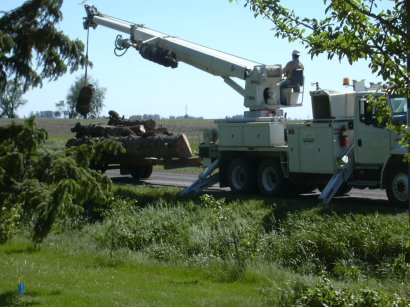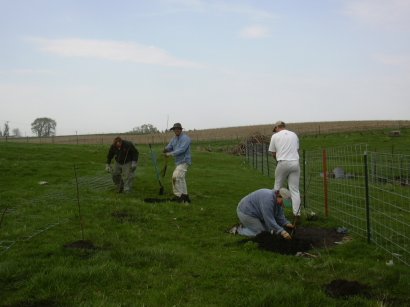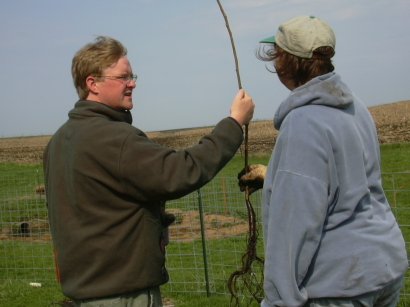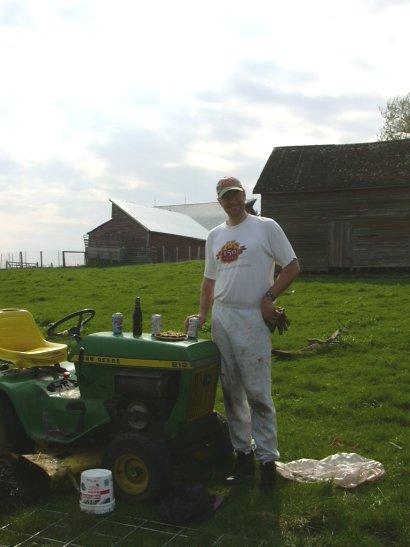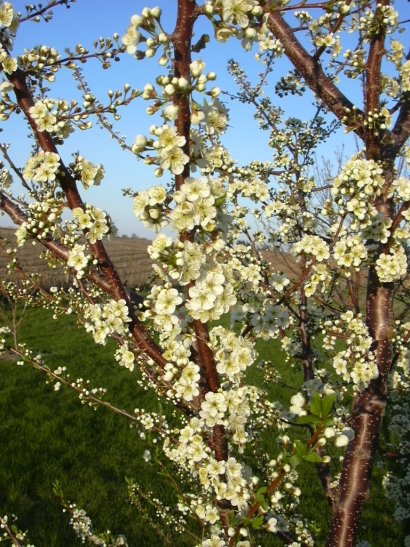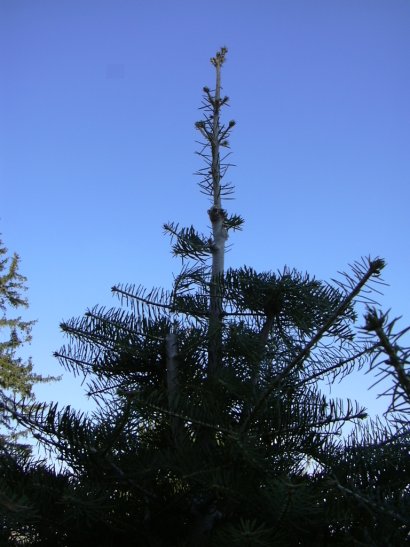Yesterday I planted seven different willow varieties. Let’s fast forward to what the willows will look like in the future. We’re thinking these will be a great addition to the farm as they fulfill the “rule of three.” We like each element of the farm to have at least three uses. The willows can be used as goat browse, woody ornamentals, and basket/furniture materials, all while growing in a moist spot of the pasture. We purchased all these willows from Bluestem Nursery – the folks have a wonderful web site. All the following photographs and descriptions are from the Bluestem Nursery site.

Salix udensis ‘Sekka’
Common name: Japanese Fantail willow, Dragon willow
Description: Large shrub; 10 m (35′); dark maroon-black new growth; very bright fall colours; highly ornamental.

Salix gracilistyla ‘Melanostachys’
Common name: Black pussy willow
Description: Large large shrub; 7 m (23′); rounded form; slow growing; showy black catkins appearing in spring; highly ornamental. Black pussy willow will often bloom (display its catkins) before the snow melts. No other willow compares to the display of orange anthers against the jet-black catkins. Slow-growing and easily controlled by selective pruning, ‘Melanostachys’ is suitable for smaller areas.

Salix triandra ‘Black Maul’
Common name: Japanese Almond leaved willow
Description: Large shrub; 10 m (35′); dark maroon-black new growth; very bright fall colours; highly ornamental. Probably the most widely used willow for baskets with varieties growing throughout Europe, Britain, the Middle East and into central Asia.

Salix koriyanagi ‘Rubykins’
Description: medium, many branched shrub; 4 m (13′) in height; reddish-green annual growth; young leaves pale pink, turning to dark green and grey beneath; sways nicely in a breeze. Used extensively in Japan for fine basketry. Naturally grows long, very flexible rods. Basketmakers will want to coppice annually in late winter. Native to Korea, but very hardy in our cold climate.

Salix babylonica var. pekinensis
Common name: Curly or Corkscrew willow, Peking willow
Description: Small tree; 6-9 m (20-30′); contorted reddish-gold new growth; outstanding ornamental throughout the year. There are many varieties of the larger Peking willow. However, this is a smaller clone preferred by the Japanese for flower arrangements, where it is used both fresh and dried. In colder climates, it is not as prone to die back, thus preserving the twisted golden branches. Highly ornamental and non-invasive, Tortuosa can be used in smaller areas. Nonetheless, one would wise to keep it well away from septic fields, which is the case with any tree. S. babylonica var. pekinensis will grow to a height of 15 – 20′ in just 3 to 4 seasons, then slow down and fill out, eventually reaching around 30′ after 8 to 10 years. There are two ways to grow this plant – pruned or left to grow to its natural form.

Salix viminalis ‘Superba’
Common name: Common Osier
Description: Tall shrub; 3-9 m (10-30′); yellow to olive-green branchlets; conspicuous yellow blooms, often before the snow melts. For basketry, plant in fertile soil, space .5 m apart and space rows 1.5m. Keep well watered and weed free for three years. Prune annually to encourage long straight rods that quality baskets require. There are two ways to grow this plant – pruned or left to grow to its natural form.

Salix caprea ‘Select’
Common name: Goat Willow, French Pussy Willow, Great Sallow
Description: Large shrub or small tree; 6-9 m (20-30′); reddish-brown new growth; leaves broadly elliptic or obovate, grey-green. This is one of the larger willows not associated with water. The natural habitat is the woodland edge and in the lowlands. In early spring, goat willow or great sallow produces an abundance of nectar and pollen on the many fat catkins (see them developing at the leaf junctions in the picture). Bees are greatly attracted to these catkins. This is one of the famous pussy willows of the floral trade.
All descriptions and photos from Bluestem Nursery where this is only the tip of the iceberg in willow varieties for sale.
one year ago…










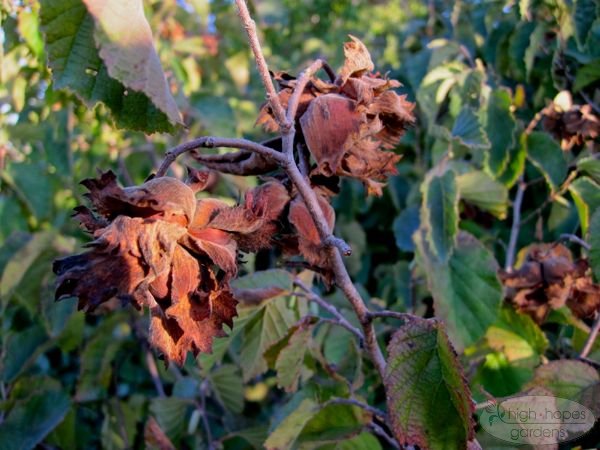





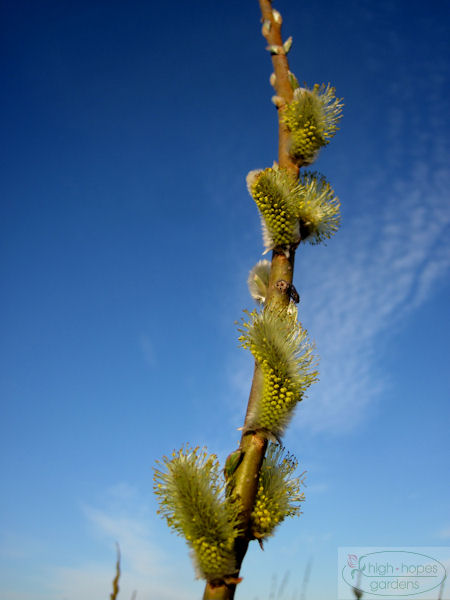





























































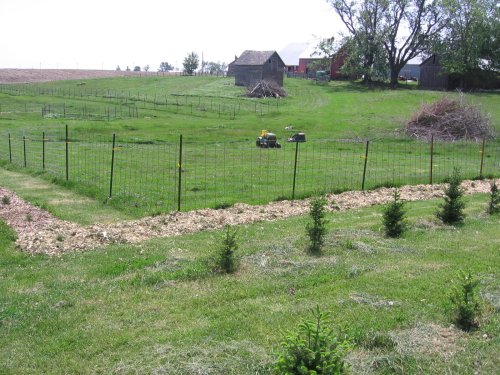







 Â Â
  




































